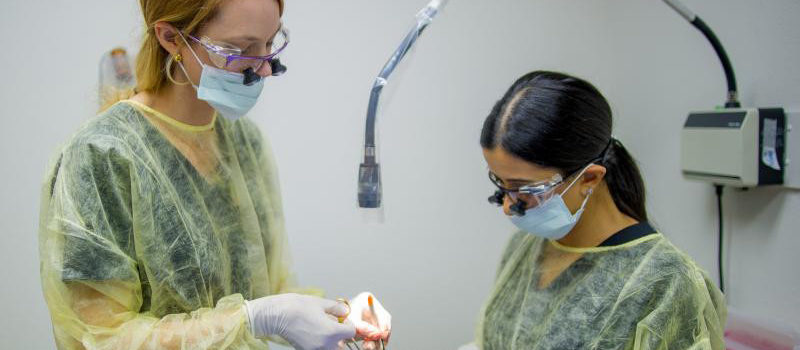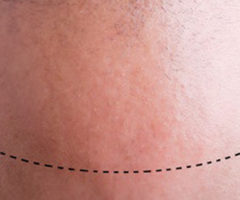How Risky Is Hair Transplant Surgery?
Many prospective hair transplant patients want to know the level of risk involved with a hair transplant procedure. It’s a good question. So just how risky is hair transplant surgery? The short answer is that, compared to other types of surgical procedures, hair transplant surgery carries relatively low risk. Since the procedure is done while you’re awake and the post-operative period is very predictable, the risk is minimal.
How Does Hair Transplant Surgery Work?
Hair transplant technologies involve “harvesting” donor hair, usually from the back of the scalp, and moving it to the front or top of scalp where you are thinning or bald. The harvested hairs are called “grafts” and are inserted into tiny holes made with small needles in the “recipient” or balding area. It takes three months for these new grafts to start growing and 12-14 months for the full results to be visible.
How Risky is Hair Transplant Surgery? Anesthesia
Both harvesting and transplanting are done with local anesthesia. This means that a numbing medication—lidocaine—is injected into the skin. You don’t need to be put to sleep for a hair transplant, and this fact greatly reduces overall risk. General anesthesia involves a much higher chance of complications. Using local anesthesia makes the procedure very safe because lidocaine reactions are rare.
How Much Pain is Involved in Hair Transplant Surgery?
This largely depends on the type of hair restoration procedure performed and your individual pain tolerance. Current procedures use either an incision with a surgical blade or a punch tool to harvest hair grafts. The incision requires stitches to close it, whereas the punches do not.
At Limmer HTC, we specialize in both follicular unit transplantation (FUT) and follicular unit excision (FUE).
It’s important to keep in mind that both FUT and FUE are surgical procedures. As with any surgical procedure, a certain amount of discomfort is expected. Because FUE does not require an incision, it is less painful than FUT. All patients are sent home with prescription pain medication to use at their discretion for a few days. Some patients find they don’t need it or may get by with only acetaminophen (Tylenol).
How Risky is Hair Transplant Surgery? Potential Complications
As mentioned, FUT and FUE are both surgical procedures and all surgeries come with certain known risks, including:
- Pain
- Bleeding
- Infection
- Scarring
- Unsatisfactory results
Additional risks that tend to be more-specifically associated hair transplant procedures include:
1) Postoperative swelling – Swelling of the forehead and facial area, if it occurs, is most likely to appear within the first 36 hours after surgery. The primary method to prevent postoperative swelling is to remain as inactive as possible in those first 2 days; sleep on your back and relax in a recliner as much as possible. If swelling is severe, it can be treated with diuretics, but nearly all swelling is resolved in about 7 days.
2) Sterile folliculitis – Folliculitis is an inflammation of the hair follicle. If you’ve ever had an “ingrown hair,” you’ve experienced minor folliculitis. Sterile folliculitis is not caused by a bacterial or other infection but simply from irritation from the new grafts.
3) Bacterial folliculitis – In bacterial folliculitis, the inflammation is caused by a bacterium. This type of folliculitis will require treatment with antibiotics, but it’s rare after hair transplant.
4) Numbness/paresthesia – Paresthesia is a burning/tingling/prickling sensation in the skin. Numbness or paresthesia, if they occur, is found around the donor site. FUT has a higher risk of numbness due to the incision, but the condition is usually temporarily. Rarely, there is permanent numbness.
5) Itching – This is, perhaps, the most common side effect on this list. However, it isn’t overly distressing for most patients, as it’s a common symptom of healing skin. We recommend zinc shampoo (Head & Shoulders) to alleviate the itch. Occasionally, topical steroids are used.
6) Failure of grafts to grow – Grafts go through a predictable shedding phase in the first month. Regrowth starts around 3-4 months. Failure of grafts is rare and can be prevented by meticulous surgical technique and by the patient’s careful adherence to post-op instructions.
7) Excessive scarring – There’s no such thing as scar-less surgery. The inherent nature of FUT surgery creates a long, thin linear scar that can be hidden by your normal hair. With FUE, scarring appears as tiny white dots scattered amongst the normal hair; these can be camouflaged with shorter hair styles.
Abnormal scarring is scarring that’s wider or thicker than expected. This can occur because of genetic variations in collagen or elastic tissue of a patient or from poor surgical technique. If you know you’re prone to keloids or wide scars, be sure to tell your doctor. Otherwise, scarring is minimized by precise surgical technique and fastidious wound care.
How Can FUT and FUE Risks Be Minimized?
The best way to minimize the risks is to choose an experienced, highly-skilled surgeon like those with Limmer HTC. Dr. Jennifer Krejci, M.D., FAAD, combines such expertise with deep empathy for hair-loss sufferers.
Dr. Krejci is a board certified dermatologist, specializing in hair restoration. Her background in dermatology is especially beneficial as a hair restoration surgeon. She understands the underlying causes of hair loss, including its genetic, environmental, and life-style components.
Contact the experts at Limmer Hair Transplant Clinic today for a consultation. Let’s explore the life-changing hair restoration options available to you at our practice.










